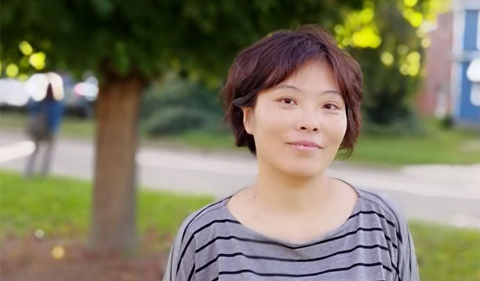The Geography Colloquium Series presents Dr. Tim Anderson and Dr. Zhenging He on “Commemorating Tragedy: A Cross-Cultural Analysis of Two Memorial Landscapes in China and the United States” on Friday, Feb. 8, at 3:05 p.m. in Clipppinger 119.
Anderson is Associate Professor and Graduate Chair in the Department of Geography at Ohio University where he has taught courses in cultural and historical geography since 1996. His research interests focus on the historical settlement geography of the United States, especially the production of regional and ethnic cultural landscapes, and the production of cultural landscapes associated with Germanic diasporic movements and communities. His most recent research involves a book project with Notre Dame University Press on the historical settlement geography of Ohio in the first half of the nineteenth century, which focuses on the production of the state’s regional cultural landscapes resulting from the migration of five different population groups during the Early National period.
He is a faculty member at Jiangsu Vocational Institute of Commerce in Nanjing, China, where she teaches courses in cultural geography and cultural tourism management. She received her bachelor’s degree from East China Normal University and her master’s and Ph.D. degrees in human geography from Nanjing University. Her research interests focus on cultural geography, the conservation of cultural heritage landscapes and city and regional planning, particularly with regard to heritage tourism and the use of GIS for such purposes. She has published extensively on the nature of historic preservation in eastern China, particularly as it relates to strategies for cultural heritage preservation and protection. Another area of research focuses on spatial-temporal modeling of Hakka migration and the documentation of Hakka cultural landscapes in eastern China. She is a visiting scholar in the Geography Department at Ohio University during the 2018-19 academic year.
Abstract: The analysis of memorial and commemorative landscapes has emerged as an important theme in cultural geography in the past decade. Such studies tend to be concerned not only with identifying the distinctive material elements of such landscapes, but with evaluating the social and political discourses embodied within them as well. In American cultural geography the study of sites associated with the Civil Rights Movement has proven to be an especially rich line of inquiry, conceptualized by a number of authors as the analysis of how the “politics of memory” are played out in specific landscapes and at particular sites. Employing Owen Dwyer’s (2004) conceptual framework of “symbolic accretion,” this presentation compares and contrasts two memorial/commemorative landscapes in China and the United States: The Memorial to the Victims of the Nanjing Massacre in Nanjing, China; and the Whitney Plantation Museum near Wallace, La. After a brief overview of relevant literature, we identify, compare, and contrast the distinctive material elements of each cultural landscape. Next, we identify some of the social and political discourses that are expressed in both landscapes. Finally, we compare and contrast both landscapes in order to identify commonalities and differences with regard to material elements and thematic discourses.





















Comments